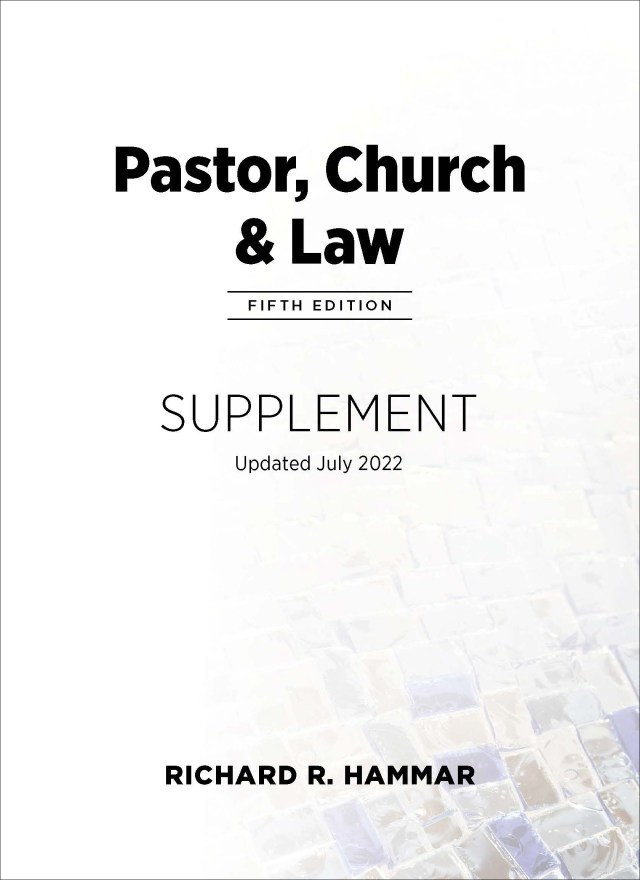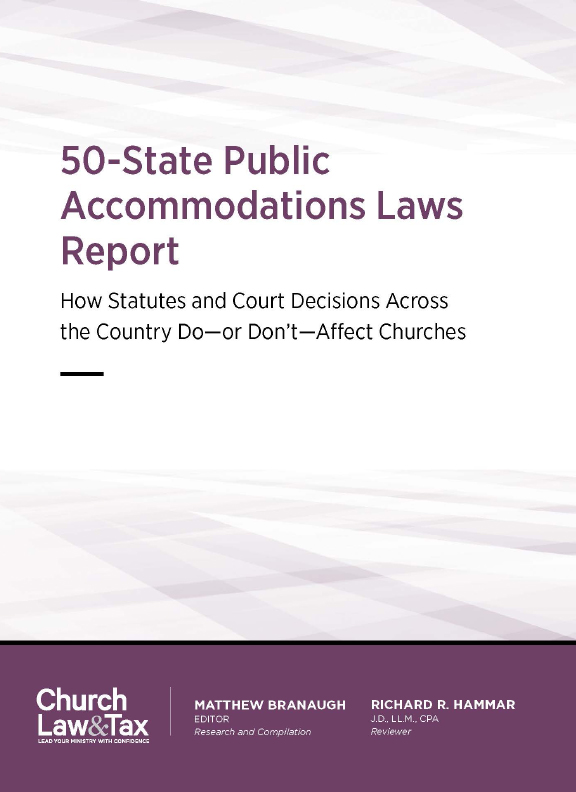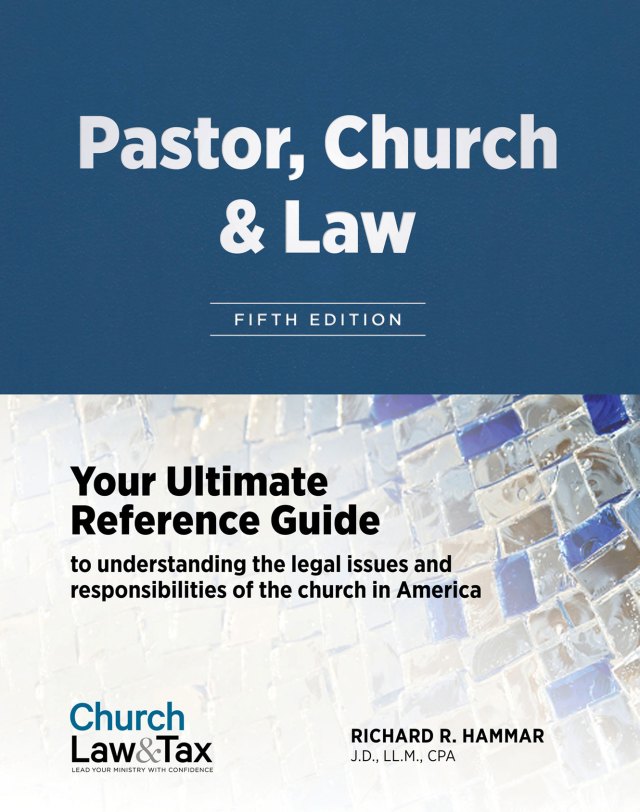Key point 10-04 . A church may be liable on the basis of negligent selection for a worker’s molestation of a minor if the church was negligent in the selection of the worker. Negligence means a failure to exercise reasonable care, and so negligent selection refers to a failure to exercise reasonable care in the selection of the worker. Liability based on negligent selection may be imposed upon a church for the acts of employees and volunteers.
Key point 10-04.3 . Churches can reduce the risk of liability based on negligent selection for the sexual molestation of minors by adopting risk management policies and procedures.
A federal appeals court ruled that a $21.7 million verdict against a teacher and private Jewish school for the teacher’s sexual molestation of a student was not excessive and would not be overturned.
Psychologist: the victim suffered from PTSD due to abuse
An adult male (the “victim”) sued the teacher and school alleging that the teacher sexually abused him for several years while he was a minor student at the school. The teacher had been, at various times, the dean, director, treasurer, and president of the board of directors of the school.
The victim was a student at the school from Fall 2001 until Spring 2005. During that time, when the victim was 14 to 17 years old, the teacher sexually abused him on a frequent, sometimes weekly, basis, sometimes for hours at a time. The teacher provided the victim with alcohol and engaged in a variety of sexual activities with him at several locations including the school, motels, and the teacher’s home.
The victim suffered physical, emotional, and psychological injuries as a result of the abuse. The lasting effect of that abuse was corroborated by his wife and his clinical psychologist.
The victim’s psychologist, a specialist in post-traumatic stress disorder (PTSD) and childhood trauma related to physical, emotional, and sexual abuse, conducted a forensic interview of the victim, and concluded that the victim was shut off emotionally, had lost his sense of trust, had difficulty with intimacy and vulnerability, continued to suffer from PTSD, and would continue to struggle with PTSD throughout his life.
Trial judge ruling: the defendant “repeatedly sexually abused” the victim
The teacher was convicted of felony child abuse, and sentenced to 20 years in prison. At a sentencing hearing, the trial judge denounced the teacher for his actions, noting that the evidence showed that he “repeatedly sexually abused” the victim over several years, and was guilty of a “colossal violation of trust. . . . He committed the worst possible crime in the worst possible way.”
The victim sued the teacher and school (the “defendants”) in a civil lawsuit, alleging that the teacher had sexually abused him and that the school’s administrators had knowledge of the abuse but failed to report the teacher to law enforcement as required by Connecticut law.
At the conclusion of trial, the jury awarded the victim $15 million in compensatory damages, and $5 million in punitive damages plus interest of $1,749,041 for a total award of $21,749,041.
The defendants appealed this verdict to a federal appeals court, arguing that it was excessive and had to be substantially reduced. The defendants asserted that the
evidence presented at trial simply did not support the jury’s exorbitant verdict in this case, which is dramatically out of step with non-economic damage awards by juries in cases involving similar claims of sexual abuse, both in Connecticut and throughout the country.
Past rulings guide appeals court’s decision against teacher
The appeals court affirmed the trial court’s verdict. It observed:
In considering a damages award, a trial court must evaluate whether the jury’s award falls somewhere within the necessarily uncertain limits of just damages or whether the size of the verdict so shocks the sense of justice as to compel the conclusion that the jury [was] influenced by partiality, prejudice, mistake or corruption. A jury award may not be set aside merely because it exceeds what the court would have awarded. There are only a few decisions in Connecticut addressing the size of a jury award in cases concerning sexual abuse of a minor, but they are instructive. For example, in [one case] the court denied a motion to set aside a $15 million jury verdict against a defendant based on claims that he sexually abused the plaintiff from the time she was six years old until she was seventeen. [In another case] the Connecticut Supreme Court upheld an award of $7 million for three incidents of sexual assault against a minor victim. And in [a third case] the court awarded $75,200 for economic damages; $500,000 for noneconomic damages; and $167,800 in punitive damages based on claims that the defendant sexually molested the plaintiff several times before the plaintiff’s sixteenth birthday. . . .
The district court did not abuse its discretion in [refusing to reduce the amount of the verdict] because the verdict is not excessive as a matter of Connecticut law. While the teacher argues that the victim lacked evidence to support the award of noneconomic damages, there was ample evidence in the record of his physical, emotional, and psychological injuries. In addition to his own testimony, his wife and psychologist both testified that he had issues with intimacy, forming emotional attachments, and vulnerability with others. His wife explained that the teacher’s abuse had a significant, negative impact on their married life. . . . The victim’s psychologist, an expert in PTSD and childhood trauma, indicated that even with treatment, the sexual abuse the victim suffered as a minor would have lifelong consequences for him. The jury clearly credited the witnesses’ testimony in finding the defendants liable and awarding compensatory damages of $15 million.
The amount of compensatory damages is undoubtedly high, but we are not persuaded that a [reduction in the size of the verdict] is warranted under Connecticut law. The award here is not excessive when compared to the awards in the cases cited above. Here, the record indicates that the victim suffered repeated abuse for approximately three years, from the time he was fourteen until he was seventeen years old. At certain points, he was abused for hours at a time, on a weekly basis. . . .
The court noted that on a “per incident basis,” the $15 million verdict for compensatory damages “falls within the range of noneconomic damages that have been upheld by Connecticut courts in cases of sexual abuse.” It cited three additional rulings by the Connecticut Supreme Court:
- Doe v. BSA Corp., 147 A.3d 104 (Conn. 2016). The Connecticut Supreme Court permitted a $7 million award for three incidents of sexual assault involving a ten-year-old boy by a Boy Scouts leader.
- Doe v. Thames Valley Council for Community Action, Inc., 797 A.2d 1146 (Conn. 2002). The Connecticut Supreme Court upheld a total award of noneconomic damages of $220,000 to minors who were sexually assaulted by their school bus driver.
- Sciola v. Shernow, 577 A.2d 1081 (Conn. 1990). The Connecticut Supreme Court ruled that a trial court erred in ordering a reduction of a jury verdict from $400,000 to $323,833 in favor of a plaintiff who claimed that her dentist sexually assaulted her while she was sedated.
The court concluded:
[The victim] testified that [the teacher] sexually abused him weekly during his sophomore year (when he was fourteen years old) and somewhat less often during his junior and senior years (but still at least every three or four weeks), and therefore he was sexually assaulted dozens of times. Based on the evidence presented at trial, we are not persuaded that the jury’s award ‘shocks the sense of justice.’ Consequently, we conclude that the district court did not abuse its discretion in denying the motion for a new trial. . . . The teacher’s challenge to the amount of the verdict fails.
What this means for churches
The sexual molestation of minors remains one of the most serious legal risks facing churches today for a number of reasons, including:
- In many churches, the number of minors attending youth services and activities is substantial.
- A single incident of child molestation can cause negative publicity in the community.
- In many cases, victims of child sexual abuse will sue the church for monetary damages.
- Many churches have inadequate insurance for child molestation claims, resulting in a potentially significant uninsured risk.
- A church is exposed to a civil lawsuit by victims of child sexual abuse, usually on the basis of negligent hiring, supervision, or retention.
- Most states have extended the statute of limitations for cases of child sexual abuse, exposing a church to lawsuits for decades.
The case addressed in this article adds an additional reason why incidents of child molestation represent a significant risk for churches: the possibility of a jury awarding substantial damages to a victim far in excess of a church’s insurance coverage.
How many churches could survive an adverse verdict of $20 million for a case of child molestation? Admittedly, this case involved numerous acts of severe molestation over several years. But the court referenced a verdict of $7 million in a case involving the molestation of a Boy Scout on three occasions. The court cited two other cases involving much lower verdicts, but these were older cases involving very different facts.
The lesson of this case is clear: A single incident of child abuse can expose a church to damages far in excess of its insurance coverage. As a result, this risk constitutes an existential threat to a church that must be taken seriously. Mirlis v. Greer, 952 F.3d 36 (2nd Cir. 2020).




